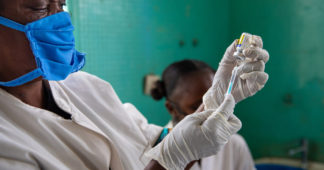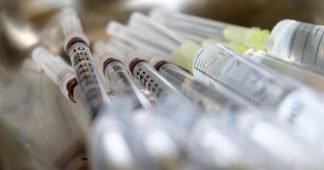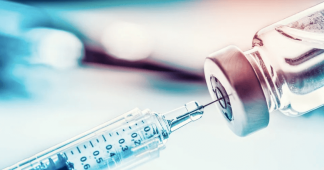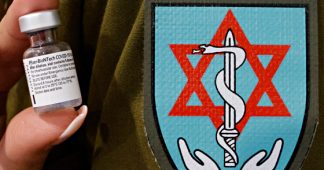4 to 7 October 2021
Full report will be published in the Weekly Epidemiological Record on 17.12.2021; only the wording of the full report should be considered as final
Report from the WHO department of Immunization, Vaccines and Biologicals
- The Director’s report focused on equity in vaccination especially in the COVID-19 pandemic context which has exposed and exacerbated inequities in access to immunization.
- Access to COVID-19 vaccines has been extreme in its inequity with high-income countries having administered 35 times more vaccine doses than the low-income countries and the WHO Africa Region countries having only 3% of the population fully vaccinated.
- While the pandemic has affected childhood immunization programmes across the world, the poorest countries have been affected the most and have been the slowest to recover.
- Country experiences show that solutions are available and the Immunization Agenda 2030 (IA2030) well lays out the path to recovery and to building resilient immunization programmes.
WHO Regional updates
- COVID-19 vaccine rollout has started in all WHO regions though the pace of vaccination varies considerably between and within regions, driven largely by the unequal access to vaccine supply. Fifty-six countries found predominantly in the Africa and Eastern Mediterranean regions were unable to achieve the target of fully vaccinating 10% of their populations by September 2021, largely because of lack of vaccine doses.
- As vaccine supplies improve, the WHO regional offices and partner agencies are supporting country preparedness to overcome existing operational challenges and scale up vaccination to reach the goal of 70% coverage by June 2022.
- Countries in all regions experienced a decline in coverage with routine childhood vaccination, though the magnitude of the decline and the speed of recovery varied.
- All the regions have developed or are in the process of developing action plans to operationalize IA2030 in their respective regions. This will provide an opportunity to accelerate recovery and to strengthen the resilience of immunization programmes.
Immunization Agenda 2030 (IA2030) update
- SAGE was presented with an update on the operationalization of IA2030, including the framework and process for monitoring, evaluation, and accountability.
- The WHO regional offices have developed regional strategies aligned to IA2030 in collaboration with their Member States and regional stakeholders; most have been approved by the respective Regional Committees.
- Progress was made with the development of the IA2030 governance and coordination process and structures, including the partnership council, the coordination group, and working groups. SAGE will conduct independent annual assessments of progress and provide recommendations for corrective actions to Member States and the relevant Working Groups.
- SAGE recommended that relevant stakeholders conduct country-by-country analysis of programmatic bottlenecks and challenges to inform corrective actions to be taken at global, regional and national levels.
- SAGE recommended that countries develop National Immunization Strategies aligned to the IA2030 and Regional Frameworks and establish national monitoring, evaluation, and accountability processes.
Poliomyelitis
- There has been a substantial drop in wild poliovirus detections in the endemic areas in 2021 and there have been no reported cases since February 2021. SAGE emphasized the need to fully engage program resources to achieve eradication while maintaining or strengthening poliovirus surveillance.
- SAGE expressed concern regarding ongoing transmission of circulating Vaccine Derived Poliovirus type 2 (cVDPV2), particularly in the African region, the recurrent cVDPV2 outbreaks in Nigeria, and highlighted the need for timely responses.
- SAGE recommended a cautious approach to withdrawing oral poliovirus vaccine (OPV) from national routine immunization schedules in the pre-eradication period but acknowledged that countries in polio-free regions with high vaccination coverage may consider switching to Inactivated Poliovirus Vaccine (IPV) only schedules, including a 2-dose IPV schedule. Once adequate supply is available, the use of whole-cell pertussis hexavalent vaccines containing IPV will facilitate the use of IPV-only schedules.
- SAGE endorsed the transition of the novel OPV type 2 vaccine (nOPV2) from initial to wider use under WHO Emergency Use Listing (EUL), based on the findings of the independent safety and genetic stability assessment.
COVID-19
- Bharat Biotech’s COVID-19 Vaccine (COVAXIN) was reviewed by SAGE; a policy recommendation will be issued when the vaccine is Emergency Use listed by WHO.
- SAGE recommended that moderately and severely immunocompromised persons should be offered an additional dose of all WHO EUL COVID-19 vaccines as part of an extended primary series since these individuals are less likely to respond adequately to vaccination following a standard primary vaccine series and are at high risk of severe COVID-19 disease.
- For the Sinovac and Sinopharm inactivated vaccines, an additional (third) dose of the homologous vaccine should be offered to persons aged 60 and above as part of an extended primary series. The use of a heterologous platforms vaccine for the additional dose may also be considered based on vaccine supply and access considerations. When implementing this recommendation, countries should initially aim at maximizing 2-dose coverage in that population, and thereafter administer the third dose, starting in the oldest age groups.
The global COVID-19 vaccination strategy
- The global COVID-19 vaccination strategy, previously reviewed by SAGE, provides the goals, the resource requirements, and describes the expected outcomes underlying the vaccination targets set for the end of 2021 and mid-2022.
- Drawing on SAGE’s June 2021 recommendation and advancing it, given the progression of the pandemic, the strategy prioritizes vaccination of high-risk populations and all adults and fully commits to the risk mitigation approach by calling for 70% of the world’s population fully vaccinated by mid-2022.
- The strategy acknowledges the scientific uncertainties and the need for updates as new evidence becomes available.
- SAGE noted that success in achieving the goals and interim targets of the strategy will require the collective and cohesive actions of all relevant stakeholders.
The RTS,S/AS01 malaria vaccine
- In a joint session, SAGE and the Malaria Policy Advisory Group (MPAG) reviewed the evidence on the RTS,S/AS01 malaria vaccine and recommended that the vaccine be used for the prevention of P. falciparum malaria in children living in regions with moderate to high transmission as defined by WHO.
- The vaccine should be provided in a schedule of 4 doses in children from the age of 5 months to reduce the burden of malaria. The use of the RTS,S/AS01 malaria vaccine should be within the context of comprehensive national malaria control plans.
- Drawing from a growing body of evidence, countries may consider providing the RTS,S/AS01 malaria vaccine seasonally, with a 5-dose strategy in areas with highly seasonal malaria or areas with perennial malaria transmission with seasonal peaks. When countries choose the seasonal deployment of the RTS,S/AS01 malaria vaccine, they are strongly encouraged to document their experience, including the vaccine effectiveness, feasibility, and occurrence of any adverse events, to feed into future guidance updates.
- The recommendation is based on results from an ongoing pilot programme in Ghana, Kenya and Malawi that has vaccinated more than 800 000 children since 2019. The evaluation results show that the vaccine has a favourable safety profile, is effective, and led to a substantial reduction in life-threatening severe malaria, even in settings with good coverage with insecticide treated nets, and access to treatment.
- The pilot programme also showed that there is high demand for the vaccine, and that it can be delivered effectively through the routine child immunization programmes without affecting the uptake of other vaccines or malaria interventions. Because of its high uptake and coverage, the vaccine has been able to reach vulnerable children who are currently not protected by other malaria control interventions.
Influenza vaccines
- Influenza causes an estimated > 1 bn cases of infection, including 3-5 million episodes of severe disease and 290,000 – 650,000 deaths annually.
- SAGE recommends that all countries consider implementing seasonal influenza vaccination based on the burden and epidemiology of disease, the cost-effectiveness of vaccination, competing public health priorities, and programmatic feasibility.
- For countries considering the initiation or expansion of programmes for seasonal influenza vaccination, SAGE recommended that the following target groups should be considered for vaccination in no particular order of priority: health workers, individuals with specific chronic medical conditions, older adults and pregnant women.
- Countries may consider additional (sub)populations for vaccination such as children and individuals at high risk of severe influenza living in congregate-living setting such as prisons, long-term care facilities, refugee camps, asylum seekers and group homes.
- Vaccination in the current and prior season afforded better protection than not being vaccinated or being vaccinated in the prior season only, although protection from vaccination in the current and prior season was attenuated, particularly for the H3N2 sub-type, when compared with vaccination in the current season alone. SAGE continues to recommend annual seasonal influenza vaccination for the priority target groups.
- Limited evidence on co-administration of inactivated seasonal influenza vaccines with COVID-19 vaccines showed no increased adverse events. Since the adult age groups targeted for seasonal influenza vaccination are also at risk for developing severe COVID-19, co-administration of an inactivated seasonal influenza vaccine and any WHO emergency use listed COVID-19 vaccine is acceptable and will maximize the uptake of both vaccines.
- In the context of the COVID-19 pandemic, SAGE continues to recommend the prioritization of health workers and older adults as target groups for seasonal influenza vaccination during the COVID-19 pandemic, and countries should also consider prioritization of pregnant women
Vaccine hesitancy and acceptance
- New evidence, tools, and guidance on ‘Behavioural and social drivers (BeSD) of vaccine uptake’ to support programmes to assess and address reasons for under-vaccination were presented to SAGE.
- SAGE recognized the importance for measuring factors contribute to low uptake and took note of the evidence-informed framework for measuring behavioural and social drivers.
- SAGE recommended the systematic gathering and use of data on BeSD to assess the reasons for low uptake, periodic monitoring of trends.
Hepatitis E vaccine
- SAGE highlighted the importance of the hepatitis E vaccination to mitigate the impact of outbreaks with the principal aim of protecting pregnant women and noted that those most affected by hepatitis E are underprivileged populations in low-resource settings.
- SAGE encouraged manufacturers to proceed as quickly as possible with seeking WHO pre-qualification, this should not preclude the use of the vaccine prior to pre-qualification.
- SAGE encouraged the continued coordination between key stakeholders and recommended that WHO work with Gavi for inclusion of hepatitis E vaccination for outbreak response and hepatitis E surveillance and diagnostics within its portfolio of support to eligible countries.
We remind our readers that publication of articles on our site does not mean that we agree with what is written. Our policy is to publish anything which we consider of interest, so as to assist our readers in forming their opinions. Sometimes we even publish articles with which we totally disagree, since we believe it is important for our readers to be informed on as wide a spectrum of views as possible.










